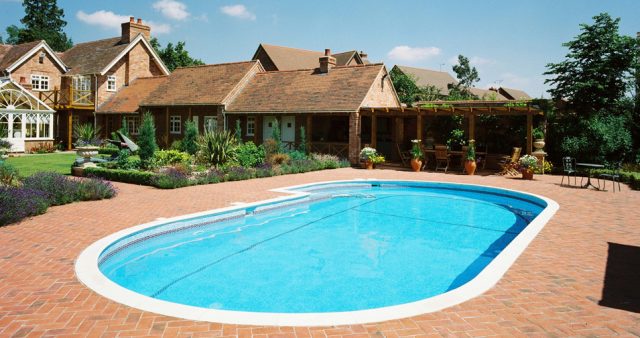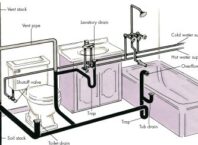Congratulations on having your own swimming pool! After months of preparation and planning with your swimming pool builder, you can officially enjoy the perks of having your own outdoor pool.
For most people, this exciting stage lasts for quite some time. This is especially true if it’s the very first pool you ever owned.
However, things can get a bit tricky in just a few months, especially if you didn’t plan and learn about proper maintenance before you actually have a swimming pool to look after.
With so many things to remember – from achieving the proper balance of pool chemicals to cleaning filters and skimming surfaces – you’ll probably have your hands full in just a short time. While you should seek out professionals to help you with the task, it pays to know these three genius pool maintenance hacks:
1. Balance the pool water twice a week.
“Balancing” your swimming pool entails maintaining the proper levels of the basic water components that ensure the effective function of the sanitizer. You’ll need to add chemicals periodically to achieve this balance.
Below are some water components you need to keep balanced and their ideal measurements:
Calcium Hardness
The amount of calcium in the water determines whether the pool’s surface will begin to erode and “chalk.” If too much calcium is present, the pool water could become murky, and stains and scale formations might appear.
Ideally, calcium hardness should be kept to around 200 to 400 ppm.
PH Levels
Water pH – or the “potential of hydrogen” that describes the pool’s acidity level – affects both the swimmers’ comfort and the condition of your pool finish and equipment.
A balanced pool’s ideal pH level should be within the 7.2 to 7.8 range on a pH test kit’s numeric scale.
Acidic water with low pH readings (from 0 to 7) translates to chlorine’s quick dissipation from the water. However, base water with high pH levels (between 8 and 14) causes the chlorine to become inactive, which means that you’ll just be wasting your money on something that doesn’t do the job.
Total Alkalinity
This is the total amount of alkaline in the water. Ideally, it should be at 100 ppm. It is also worth noting that alkalinity levels and pH levels directly affect each other. Low alkalinity is equivalent to lower pH.
You may be wondering how balancing the water more often can help you save on chemicals. If you’re doing it more frequently, doesn’t that mean you’ll be using up more and not less?
Actually, checking and regulating pool water chemicals as frequently as two times a week ensures that the water is in its “balanced” state more often. As a result, you will require fewer chemicals to adjust the basic water component levels to what’s ideal.
In contrast, the longer the water remains unbalanced, the more chemicals are needed to correct it. In short, you’ll spend less money on chemicals if you spend more time checking the pool water’s balance.
2. Keep the pool water at just the right level.
Besides the water’s chemical balance, its actual level also affects how well the swimming pool can be maintained in its optimal performance. This also follows the Goldilocks Rule – not too low and not too high.
If the water is too low, the water pump can dry up. If it’s too high, it can get burnt because debris can get trapped in the skimmer door. Either way, pool water that’s not within the ideal level would impair its optimum performance and become difficult to maintain.
3. Use everyday household items to clean your pool.
Cleaning a swimming pool not only becomes a hassle when you have to DIY, but it can also be quite expensive — unless, of course, you use common household items to do the job.
Believe it or not, you don’t need to spend a fortune on a complete set of equipment to ensure that your swimming pool stays clean and debris-free. Simple items like pantyhose, blower, baking soda, and many others can be used to clean your pool.
Pantyhose to get rid of debris
Don’t throw away those old pairs of pantyhose just yet. Instead, set them aside to use for cleaning your pool water.
You see, this garment can help you get rid of most debris in the water before it reaches your filter system. Simply wrap an old pair around your pool skimmer basket or net, and you’re good to go.
Doing this can help your filter system work more efficiently and extend its lifespan. Sure, you can do without the pantyhose on your skimmer, but having one attached makes the tool more efficient than without.
Blower for your winter cover
You may need to cover your pool during winter to ensure that it remains in its best state. This also helps protect it from debris.
But what will protect your winter cover?
To prevent leaves and other debris from accumulating on your winter cover, use a leaf blower to get rid of most of it. This will allow you to use the cover several times more before it gives in to wear and tear from harsh weather conditions and age.
Pro Tip: be careful not to damage your winter cover when doing this.
Baking soda for clean tiles
Besides the water, you also need to keep the area around your pool clean, including the tiles. Make sure that they are free of debris that may find their way into the pool. Prevent muck accumulation by cleaning it with baking soda.
For this cleaning hack, mix just enough water with baking soda to make a baking soda paste. Once you have the mixture, apply to clean the tiles using a brush or sponge. Don’t worry, baking soda won’t harm your pool or the people who swim in it.
Enjoy Your Swimming Pool More
Whether you own a beachfront apartment or a vacation home in the suburbs, having a swimming pool in your property offers luxury and comfort. Make the most of your new pool with these maintenance hacks, and spend more time enjoying it instead.

















































































